Who were the original ring-bearers in The Lord of the Rings and what became of them by the end of the books? The creation of the rings of power by Celebrimbor, under the guidance of Sauron, changed the fate of Middle-earth forever.
Where before the Free Peoples had to contend with the will of the dark lord alone, and battle only the devilry that came out of Mordor, the rings of power allowed Morgoth’s lieutenant to directly influence the rulers of Middle-earth and wreak chaos across the lands.
Three rings were given to the Elven lords, who used them to set up great havens for their kind in Lindon, Imladris, and Lothlorien. Seven were given to the Dwarven kings, who, in their greed, “dug too greedily and too deep,” and brought about their own ruin. And nine rings were given to the rulers of Men, who immediately yielded to its power, buying immortality and a measure of power at the cost of their sanity and will. And then Sauron created the One Ring deep in the heart of Amon Amarth, Mount Doom, and used that ring to bind the rest to his will.
Of course, you’ll already know most of this if you’ve watched the intro to Peter Jackson’s The Fellowship of the Ring, but what you may be wondering is which rulers were given these rings of power, and what ultimately became of them. Here’s everything we know about ring-bearers and their fate in the Fourth Age of Middle-earth.
The three Elven rings and their fates
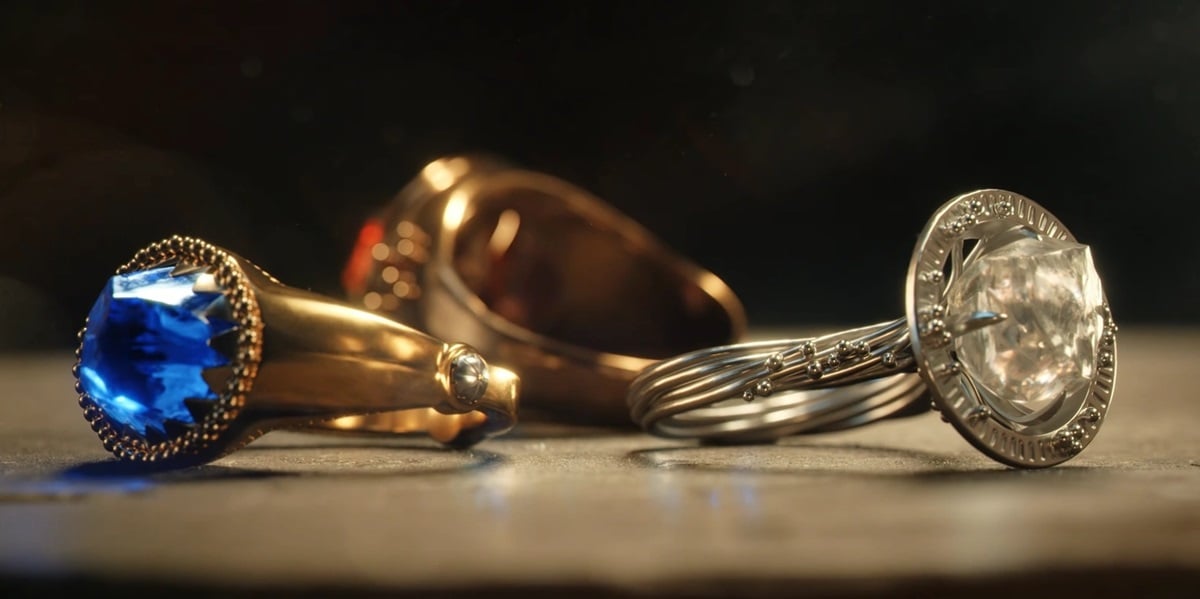
The purpose of the three rings was to preserve life and ward off the decay of time. These were Nenya (Ring of Adamant), Narya (Ring of Fire), and Vilya (Ring of Air) first given to Galadriel, Círdan the Shipwright, and High King Gil-galad, respectively.
Galadriel continued to wear Nenya until the end, using it to safeguard Lothlorien against the Shadow rising in the east. Círdan gave his ring to Gandalf when he came to Middle-earth to counter Sauron’s evil, while Gil-galad’s ring passed on to Elrond after his death.
When Sauron put on the One Ring for the first time, the elves immediately knew of his presence and took the rings off. But after Sauron’s defeat in the War of the Last Alliance, the ring-bearers could once again use the power of the Three to the benefit of their peoples. After the destruction of the One Ring, the Three lost all their potency, and so began the inevitable decay of the Elven realms that had previously resisted the natural entropy of the world.
The seven Dwarven rings and what became of them
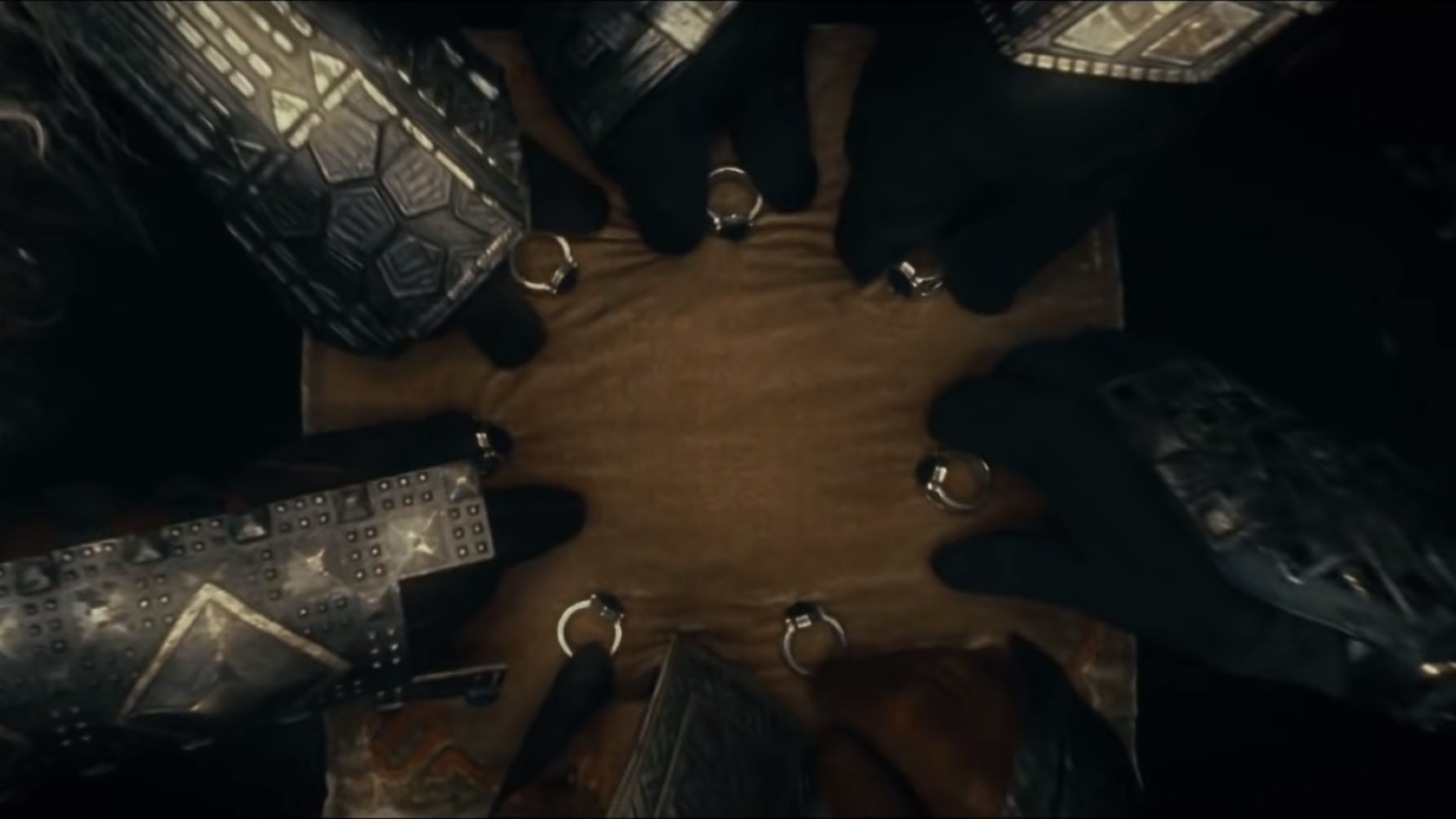
After sacking Eregion, Sauron forced Celebrimbor to give him the rest of the rings of power. Six rings he gave to the Dwarven kings, who, using their power, amassed great wealth and became known for their greed. It’s also said that Sauron gave a seventh ring to Durin III, an event depicted in Amazon’s Rings of Power series. The line of Durin would inherit this ring until it came to Thrain II. Sauron imprisoned Thrain in the dungeons of Dol Guldur until he gave up his ring. (The events of which are depicted in The Hobbit: The Desolation of Smaug.)
According to lore, four of the seven Dwarven rings were destroyed by dragon fire, while Sauron reclaimed the other three when he returned in the Third Age. The Deceiver offered to give the rings back to the Dwarves in exchange for their fealty during the events of The Fellowship of the Ring, but they sent back his dark emissary without a second’s hesitation. Apart from Durin III, it’s not clear who their original bearers were, but we do know that they, too, lost their strength after Frodo destroyed the One.
The nine rings for mortal Men, doomed to die
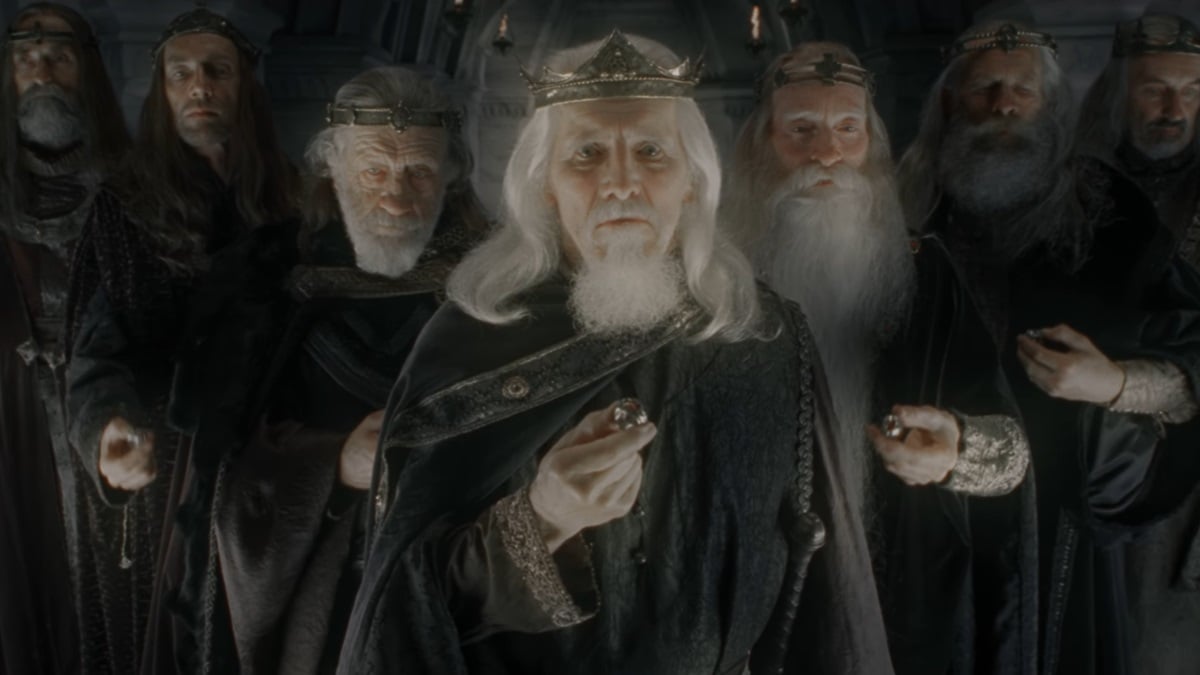
Sauron had advised the smiths of Eregion to create nine rings for Men. These rings could prolong their life and give them immortality, while also bestowing them with invisibility and a keen awareness of the wraith-world.
The nine lords of Men used this to gain wealth and glory, but they were all too easily corrupted. In time, they became part of the wraith world and enslaved by Sauron, neither living nor dead, tormented by the power of the One until their eventual destruction in Mordor.
Who these people were, we don’t know, but it’s implied that at least three were Númenorean lords. That means that when Sauron inevitably gets the nine rings from Celebrimbor, he’s going to visit the island kingdom. (We suspect the current king, Ar-Pharazôn, or his son, are likely to join the Nine Nazgul.)
As for the rest, there is the Witch-King of Angmar, the Lord of the Nazgul, whose background is ambiguous, and then there is his second in command, Khamûl, the Lord of Dol Guldur, who was probably an Easterling hailing from the lands of Rhûn.
The One Ring and its bearers
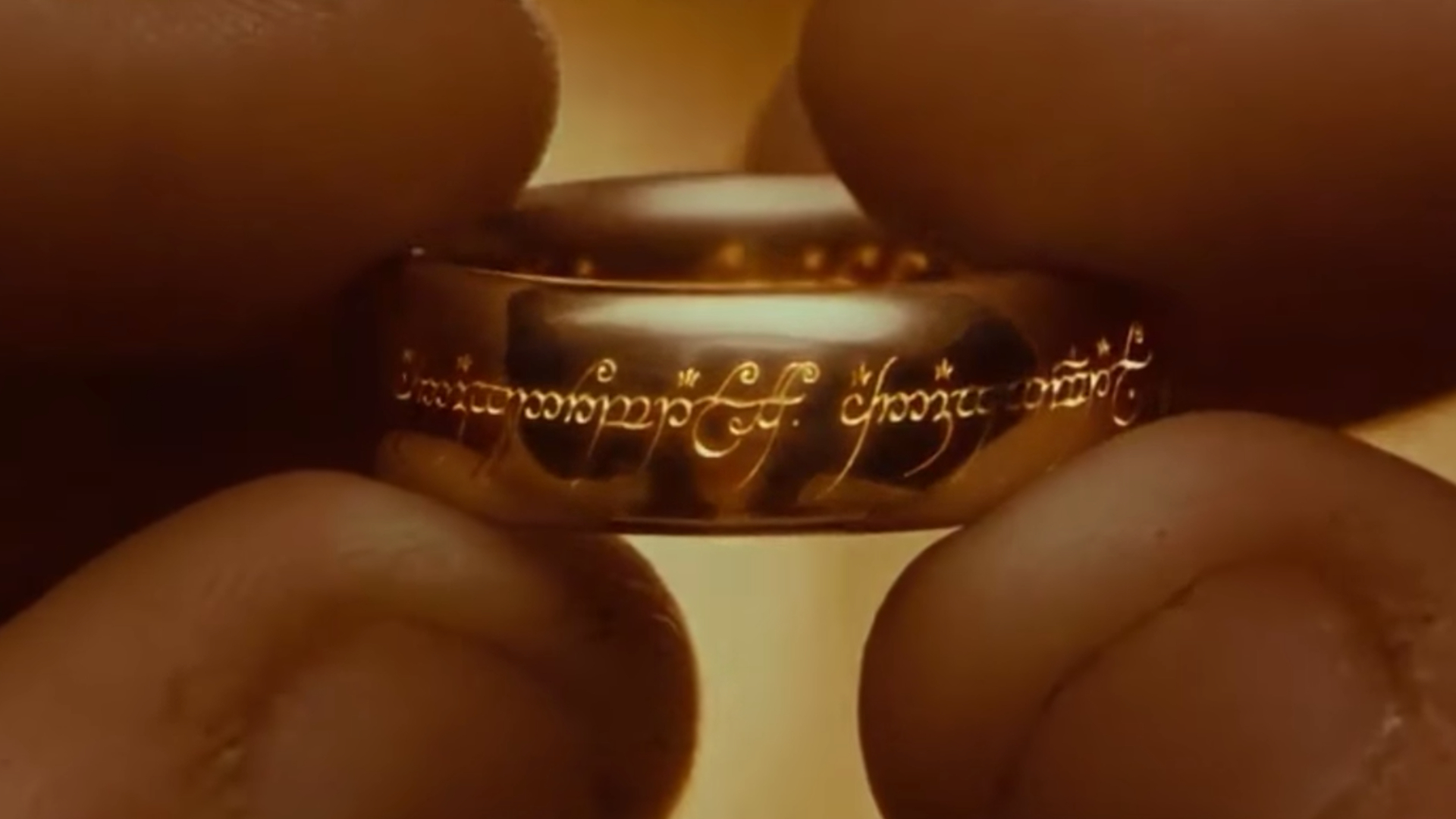
There were three main ring-bearers in the course of The Hobbit and The Lord of the Rings, and these were Bilbo Baggins, Frodo Baggins, and Samwise Gamgee, who briefly carried it when Frodo was taken captive in Cirith Ungol.
But chronologically, many people came in contact with the One Ring and were in one way or another influenced by its power.
First, there was Sauron, who created and poured his life-force into it. Then came Isildur, who took the ring from Sauron’s finger, thus destroying his threat in the Second Age. The ring betrayed Isildur and fell into the river Anduin. It was then discovered by Déagol, whom Smeagol (Gollum) killed.
Gollum retreated into the Misty Mountains and remained there for hundreds of years, until Bilbo Baggins came along and stole the One Ring. He kept it for sixty years, until Frodo Baggins inherited it and went on his journey towards Rivendell. Besides Frodo, who mainly carried the Ring all the way to the mountain of fire, three more people touched the ring; Gandalf, when he discovered it in Bag End for the first time, Tom Bombadil when he handled it in his house and seemed unmoved by its power, and lastly, Samwise, who safeguarded it for a little while in the final stretch of the journey.

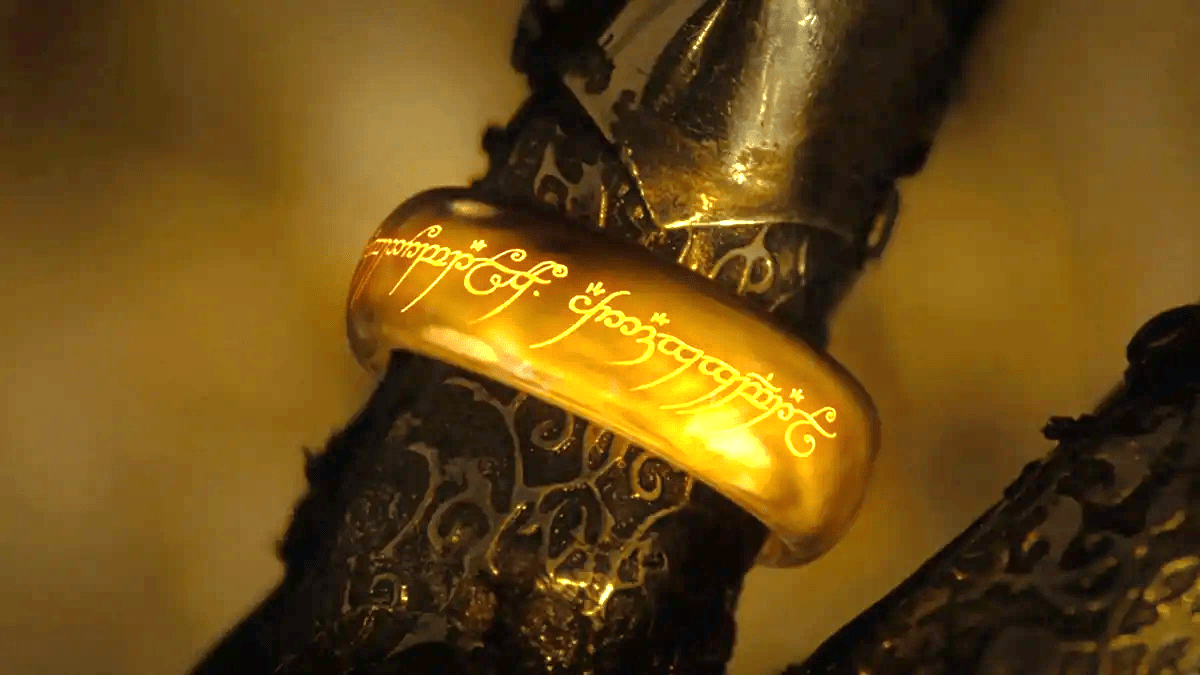








Published: Sep 30, 2024 03:52 am